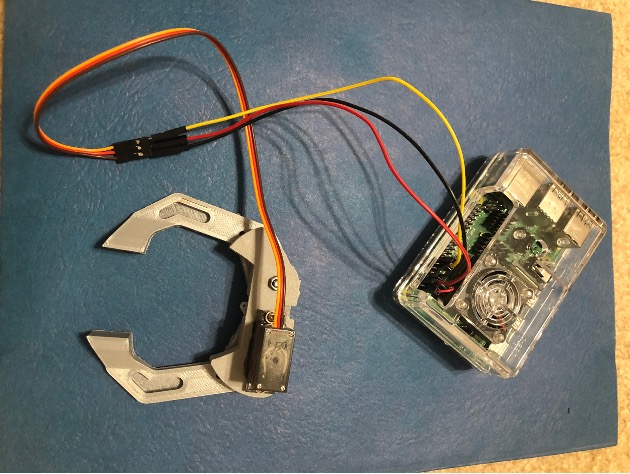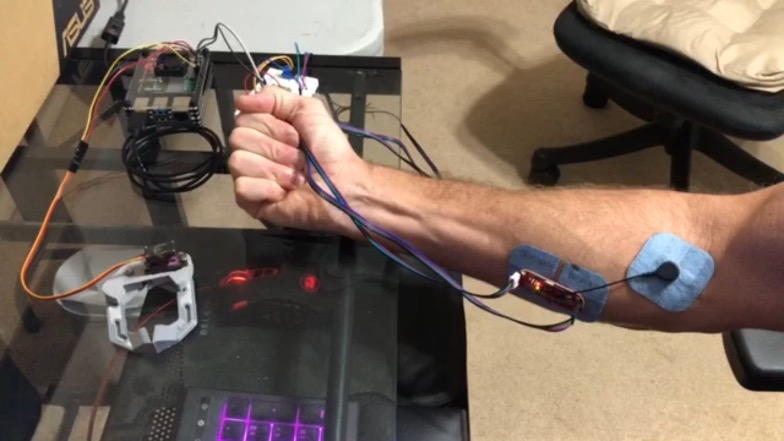BioBot Technology Examined in Assisting Humans
When Wilner Gomes Viana was 13 years old, his father took him to a technical school in his native Brazil. As part of the tour, the young Viana passed by students playing with a simply constructed robotic arm, grabbing children’s shape sorter blocks and putting them in the corresponding hole. It was then he knew he wanted to get into robotics.
Now an electrical engineering senior at Florida Tech, Viana is utilizing robotics to potentially assist humans with difficult or unsafe tasks.
Viana and his team, consisting of student researchers Jack Crawford and Andrew Neal, have developed the BioBot project, a robotics system where sensors are attached to the arm and hand of a human operator and used to control a robotic claw. The purpose of the BioBot project, which will be part of Viana’s senior design project, is to use muscle tissues to actuate a robotic hand. The BioBot would also allow for greater control when working on tasks involving robotics, and, down the road, could be especially helpful in toxic or other unsafe environments.
The team utilized digital signal processors, a robotic hand, and an electromyography (EMG) sensor, which measures small electrical signals generated by muscle movement. The BioBot digital process is designed for optimal accessibility, with sensors placed in key points of moments on the arm and hand of the human to better simulate the movements of the activated muscle when opening and closing objects. Through studying voltage level signals of previous works, Viana was able to have a better understanding of how to simulate the mechanics between a human arm and a robotic one.
“We have a linear equation that, depending on where the voltage level of the signal is, the claw is going to move to that specific position,” Viana said. “So we can control the force that we are squeezing in the claw.”
The BioBot was developed in the computer systems class led by Veton Kepuska. It was inspired by his work on the senior design project headed by Lee Caraway, where they are working on a collaborative robot (Cobot). Unlike traditional industrial robots, cobots are intended for direct human/robot interaction within a shared space or in proximity. Cobots usually work on tasks, such as inspection and picking. According to Statista, the number of cobots installed every year grew between 2017 and 2020, with approximately 22,000 cobots installed worldwide in 2020.

While there were challenges in the BioBot project, such as securing parts, the biggest one was time. Viana, 30, has been working as an engineer for 12 years, originally working in Brazil for an international company, then moving to America and transferring to a company branch in Melbourne. Having a career before finishing his studies is something that also helped Viana, as he was able to better manage and segment all the work he would have to do, and where to start on the project.
“Me and (my teammate) Jack, we spent a lot of evenings going to like midnight, 1 a.m. eating pizza and working on the system to make sure everything was correct. I feel it was a challenge, but it was also playing around with technology and that’s something that me, and Jack, and Andrew really enjoyed doing.”
In the future, Viana and his team would like to integrate the BioBot technology with their cobot. Viana discussed possibly controlling the entire arm with the sensors in a distant area, such as a hostile environment. The technology could be used as a prosthesis, allowing for the movement of limbs.
Viana still remembers the little kid walking through that technical school, enamored by his new discovery of robots. Through his BioBot development, he may make a major impact in robotics technology himself.
“As a little kid, I was really amazed by robotics. It’s something that just is really cool for me,” he said.





